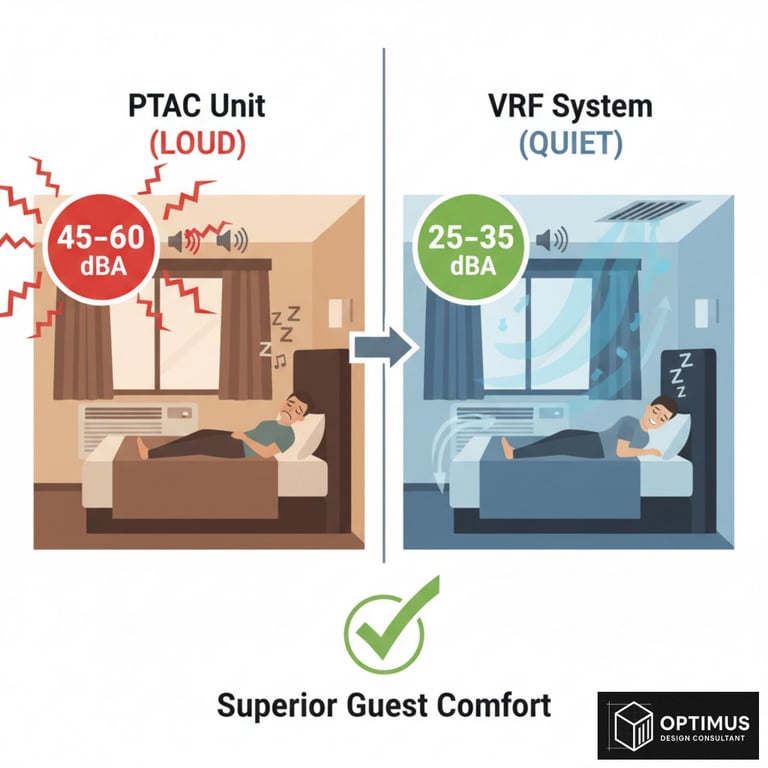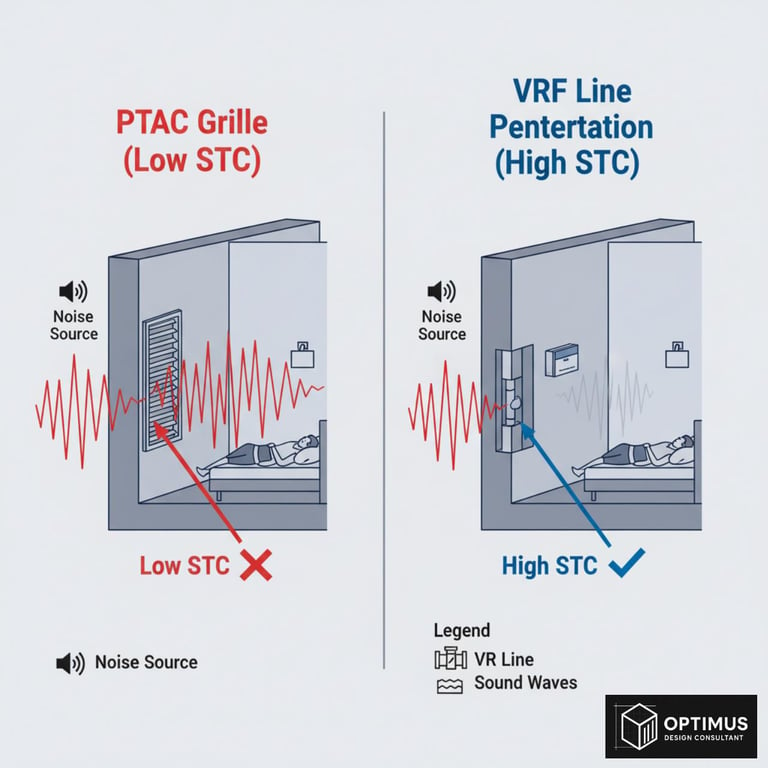The Silent Comfort: Designing Hotel HVAC Systems to Conquer Noise Complaints
In the hospitality industry, guest satisfaction surveys consistently highlight noise as the single greatest detractor from a restful stay. While exterior traffic and neighboring guests are common concerns, a frequently overlooked source of noise pollution comes directly from within the room: the Heating, Ventilation, and Air Conditioning (HVAC) system. For hotel developers and operators, selecting the right HVAC technology is not just an efficiency decision—it is a critical investment in the perceived quality and comfort of every guestroom. Choosing a quiet, high-performance system can dramatically reduce guest complaints, leading to higher ratings and repeat bookings.
10/14/20252 min read


Noise Pollution: The Two HVAC Challenges
When evaluating noise performance in hotel HVAC systems, our engineering approach focuses on mitigating two distinct types of noise transmission:
1. Sound Generated by the Unit (In-Room Decibels)
This is the internal noise produced by the fan, compressor, and airflow of the unit itself. Noise levels are quantified using the decibel (dBA) scale.
Traditional systems like Packaged Terminal Air Conditioners (PTACs) often have noise levels ranging from 45 dBA up to 60 dBA or more, depending on the unit's quality and maintenance state. This noise can be directly disruptive to sleep.
Variable Refrigerant Flow (VRF) Fan Coil Units (FCUs), which are often installed above the ceiling or in a closet, are generally engineered to operate in the ultra-low range, typically between 25 dBA and 35 dBA. This significant reduction ensures the system operates in near-silence, enhancing guest comfort.




Strategic Selection for Superior Comfort
While various HVAC technologies exist (PTACs, VTACs, Central Systems, and VRF), our specialized consulting services focus on determining the best fit based on project budget, franchise brand standards, and the acoustic environment of the site.
For properties prioritizing premium guest comfort and energy efficiency, modern systems like VRF stand out due to their ability to:
Offer highly individualized zone control, allowing guests to set precise temperatures.
Maintain extremely low operational noise (low dBA).
Minimize sound transfer from the exterior by eliminating large wall penetrations (high effective STC).
Consult with Our MEP Specialists
The mechanical design of your hotel significantly impacts construction costs, operating expenses, and, most importantly, the guest experience. An engineering oversight in HVAC selection can lead to years of costly noise complaints and maintenance issues.
Don't let mechanical noise undermine your luxury property or midscale value proposition.
We provide detailed analysis to balance initial investment with long-term operational noise control. Consult with our engineering team today to design an HVAC system that guarantees energy efficiency and the quiet comfort your guests demand.
Thank you,
Pratik Farkade
Founder, Optimus Design Consultant
Email: pratik@optimusdesignconsultant.com
WhatsApp: +91 7972991226
2. Sound Transferred Through the Unit (Exterior Noise)
This refers to outdoor environmental noise—such as traffic, airplanes, or city sounds—that infiltrates the guestroom through the HVAC system's penetration point in the exterior wall. Sound transfer is measured using the Sound Transmission Class (STC) rating. A higher STC rating indicates superior sound blocking capabilities.
Systems requiring an external grille, such as PTACs, create a vulnerable pathway for exterior noise. The grille assembly often provides a lower STC rating, potentially allowing significant outdoor sound to enter.
VRF Fan Coil Units often offer a significant acoustic advantage because the primary refrigerant lines typically require only small penetrations or are fed from central zones, eliminating the large, sound-vulnerable exterior grille common to decentralized systems. This architectural difference provides excellent insulation against exterior noise pollution, which is crucial for urban, highway, or airport locations.
Services
High- quality BIM design and MEP coordination services tailord to your project needs.
Consultancy
GET IN TOUCH
Whatsapp: +91 7972991226
© 2025. Optimus Design Consultant. All rights reserved.
